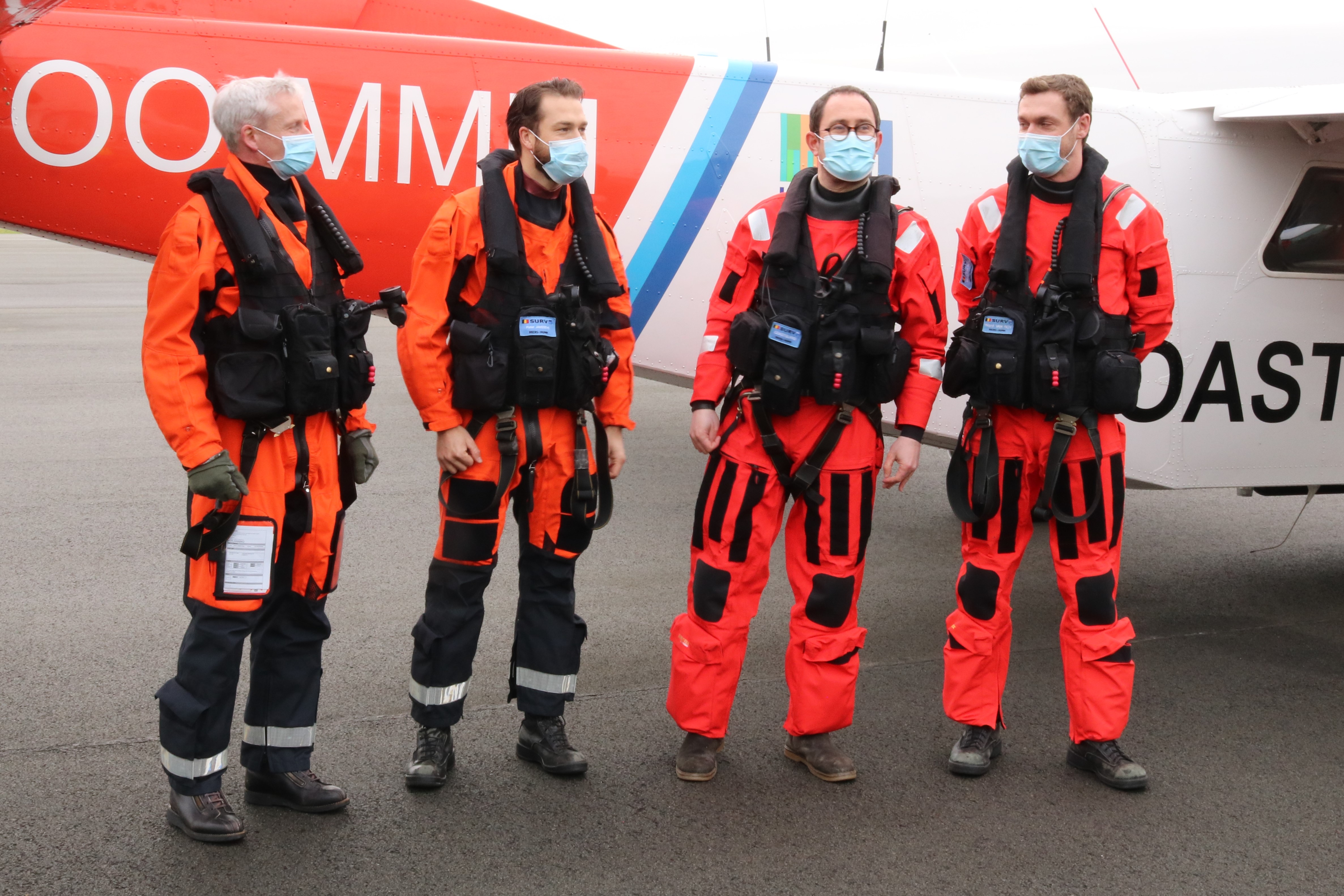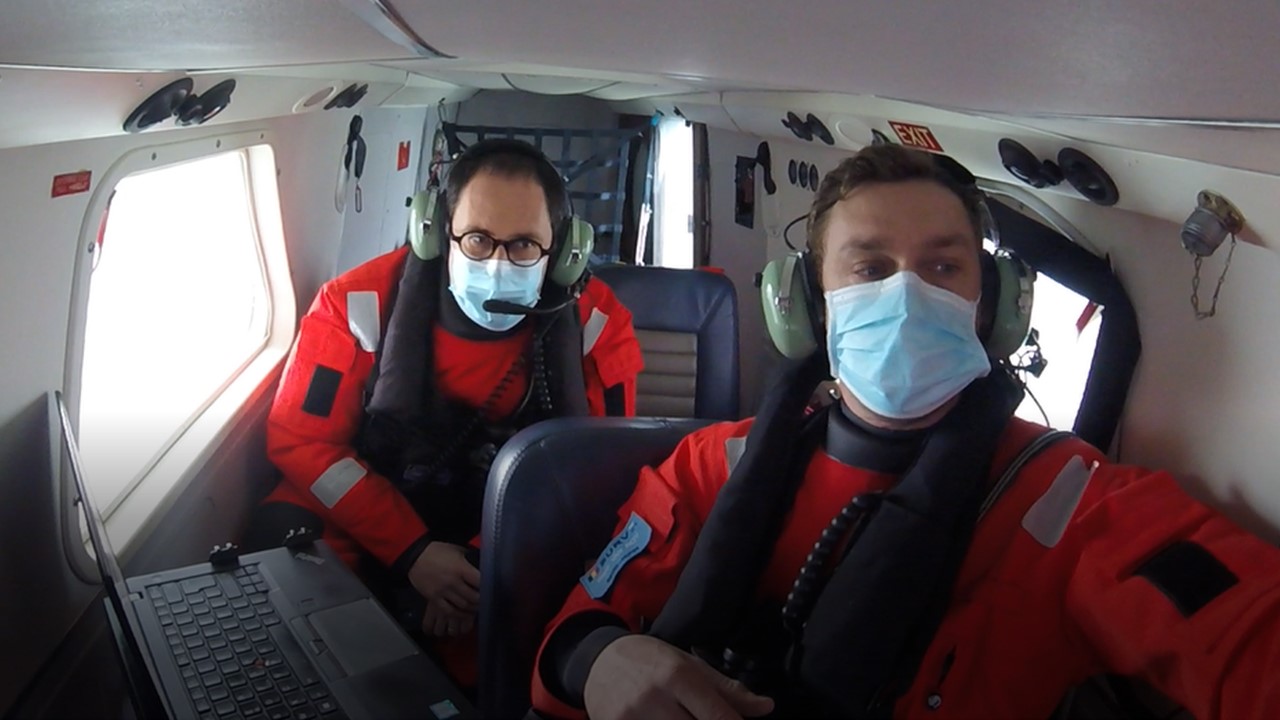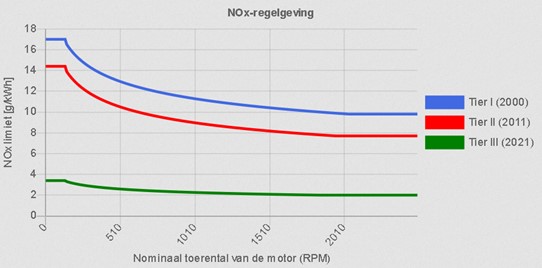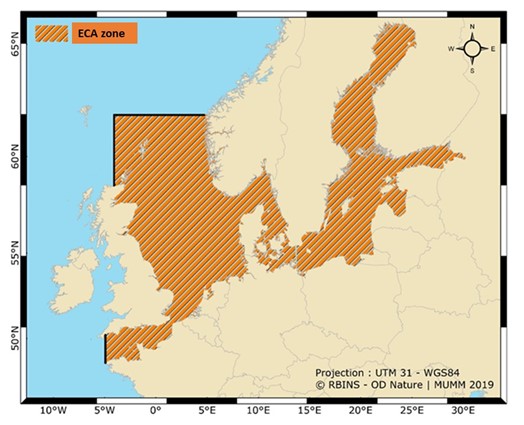Le mercredi 13 janvier 2021, le vice-premier ministre et ministre de la mer du Nord Vincent Van Quickenborne a vérifié dans quelle mesure les navires dans la partie belge de la mer du Nord respectent les normes applicables en matière de pollution atmosphérique. Pour ce faire, il a volé dans l’avion des garde-côtes belges. Grâce à l’application d’un capteur « renifleur » dans cet avion, notre pays est reconnu comme un pionnier dans la lutte internationale contre la pollution atmosphérique au-dessus de la mer. Le capteur permet de mesurer sur le terrain les composantes polluantes des émissions des navires. Les mesures du soufre sont au programme depuis 2016, et depuis 2020, les composés azotés peuvent également être détectés. Ainsi, la Belgique a été la première à être prête à se déployer au-dessus de la mer pour surveiller les restrictions qui s’appliqueront à partir du 1er janvier 2021 en mer du Nord concernant les émissions d’azote des navires.

Les émissions de dioxydes de soufre (SO2) et d’oxydes d’azote (NOx) des navires contribuent de manière significative à divers problèmes sanitaires et environnementaux, tels que la formation de poussières fines, l’eutrophisation (enrichissement des aliments par une fertilisation excessive) du milieu de vie (sur terre et en mer) et l’acidification des régions côtières très fréquentées. Elles donnent également lieu à la formation de l’ozone, gaz à effet de serre qui non seulement contribue au réchauffement du climat mais peut aussi causer d’importants problèmes respiratoires. Assez de raisons pour prendre la lutte contre l’émission de ces substances au sérieux !
Attention fédérale à la lutte contre la pollution de l’air
La Garde côtière belge utilise déjà depuis 2016 un capteur dit « renifleur » à bord de l’avion de l’UGMM (Britten-Norman Islander, numéro d’immatriculation OO-MMM) déployé au-dessus de la mer pour surveiller les violations environnementales et nautiques. Ce capteur est un outil important dans la lutte contre la pollution de l’air. La Belgique était déjà sous les feux des projecteurs internationaux en ce qui concerne l’application de la législation sur le soufre, et en 2020, elle a étendu son expertise unique à la mesure des composés d’azote dans les émissions des navires en mer.
« Pour l’achat du capteur d’azote, mon prédécesseur Philippe De Backer a mis à disposition un budget de 70 000 € en 2019 auprès du service scientifique de l’Unité de Gestion du Modèle Mathématique de la mer du Nord (UGMM) de l’Institut royal des Sciences naturelles de Belgique (IRSNB), qui possède et gère l’avion des gardes-côtes. Dans ma politique également, nous faisons de la lutte contre la pollution atmosphérique au-dessus de la mer une priorité et nous suivons ce dossier de près » déclare le ministre Van Quickenborne.

Lorsque des navires présentant des niveaux suspects de soufre ou d’azote dans les émissions sont détectés, un rapport est établi et soumis aux services d’inspection portuaire du SPF Mobilité. Ils montent ensuite à bord et soumettent le navire à une inspection approfondie. Si des irrégularités sont constatées, une amende administrative est imposée. En identifiant les navires suspects sur la base d’une surveillance aérienne, les inspections et les échantillonnages portuaires peuvent être effectués de manière plus ciblée, ce qui les rend plus efficaces.
Zone de contrôle des émissions d’azote
Le 1er janvier 2021, une zone de contrôle des émissions d’oxydes d’azote (NOx) est entrée en vigueur dans la mer du Nord et la mer Baltique. Cette zone dite de contrôle des émissions d’azote (NECA) fait partie de la Convention internationale pour la prévention de la pollution par les navires (MARPOL), une convention de l’Organisation maritime internationale (OMI). La règle 13 de l’annexe VI de MARPOL fixe les limites d’émission de NOx pour les moteurs diesel marins, sous la forme de la quantité de NOx par unité de puissance du moteur (exprimée en g NOx par kWh).

Trois niveaux d’émission sont définis en fonction de la date de construction (pose de la quille) du navire, appelés « Tiers ». Les navires construits entre 2000 et 2011 doivent se conformer à la norme de niveau I (maximum 17g NOx/kWh), les navires construits après 2011 devront se conformer à la norme de niveau II (maximum 14,4g NOx/kWh). Les navires construits à partir de 2021 devront se conformer aux normes d’émissions de NOx les plus strictes de troisième niveau (maximum 3,4 g NOx/kWh) dans la zone NECA. Les navires construits entre 1990 et 2000 avec une grande capacité de moteur (>5000kW) ou une taille de cylindre supérieure à 90l sont également soumis à la norme Tier I. Aucune norme n’a été fixée pour les navires plus anciens. L’objectif est de parvenir à une réduction progressive allant jusqu’à 80 % des émissions de NOx des navires naviguant dans ces zones et dans d’autres zones NECA d’ici 2040.
Il existe également des zones de contrôle avec des normes strictes pour le soufre, et depuis 2015, les eaux marines belges font partie de la zone SECA (Sulphur Emission Control Area) de la mer du Nord et de la mer Baltique. Étant donné que les zones NECA et SECA pour la mer du Nord et la mer Baltique correspondent géographiquement, à partir de 2021, nous ferons simplement référence à la zone ECA de la mer du Nord et de la mer Baltique (voir carte).

Le capteur de NOx
Lorsqu’un cadre juridique restrictif n’est pas accompagné de mécanismes de contrôle adéquats, les règles risquent évidemment de rester lettre morte. Jusqu’à récemment, la législation sur les NOx ne pouvait être appliquée que par le contrôle de la possession d’un certificat international de prévention de la pollution atmosphérique valide, qui devait être considéré comme une preuve prima facie de conformité. De même, il n’a pas été possible récemment de déterminer avec certitude dans quelle mesure les navires utilisant des techniques de réduction des émissions (par exemple, des convertisseurs catalytiques) avaient activé leur équipement à temps pour entrer dans la zone de contrôle des emmisions, et donc étaient effectivement conformes à la réglementation sur l’azote.
La nouvelle technologie des capteurs d’azote change cette situation. Pour la première fois, une surveillance précise des NOx peut être effectuée en mer, et les navires non conformes peuvent être identifiés avec des mesures réelles comme preuves.

Résultats des tests et perspectives d’avenir
Le capteur de NOx a fait l’objet de tests approfondis au cours du second semestre 2020. « Au cours de 25 vols, nous avons pu déterminer avec succès les émissions d’azote de pas moins de 394 navires dans les eaux belges ! » précise Ward Van Roy, l’un des opérateurs de l’avion des garde-côtes. Environ la moitié des navires contrôlés ont été construits entre 2000 et 2011, et un tiers d’entre eux étaient plus récents que 2011. Les autres navires datent d’avant 2000. « Ce faisant, nous avons constaté que la grande majorité des navires contrôlés qui doivent respecter les normes des niveaux I et II à partir de 2021 étaient déjà conformes, mais nous avons également documenté certains navires dont les concentrations d’azote dans les émissions étaient supérieures au double de la limite. Nous attendons avec impatience de voir si cela continuera à être le cas après l’activation de la NECA le 1er janvier 2021 ». ajoute Van Roy.
Le ministre Van Quickenborne conclut : « La Belgique était prête à assumer son rôle de contrôle des émissions d’azote à partir du 1er janvier 2021. Les premiers résultats sont un grand succès et nous donnent confiance dans notre capacité à collecter une énorme quantité d’informations sur les émissions d’azote des navires en mer. Dans l’intervalle, j’ai également débloqué des fonds pour l’achat d’un capteur capable de mesurer les émissions de « carbone noir ». Il sera ajouté à l’équipement de l’avion plus tard en 2021 et fournira des résultats qui aideront à élaborer les réglementations nécessaires au sein de l’OMI. Nous visons une réduction de 55 % d’ici 2030 et la neutralité climatique d’ici 2050. Nous renforçons ainsi le rôle de pionnier de la Belgique dans la lutte contre la pollution atmosphérique due aux émissions des navires en mer ».
